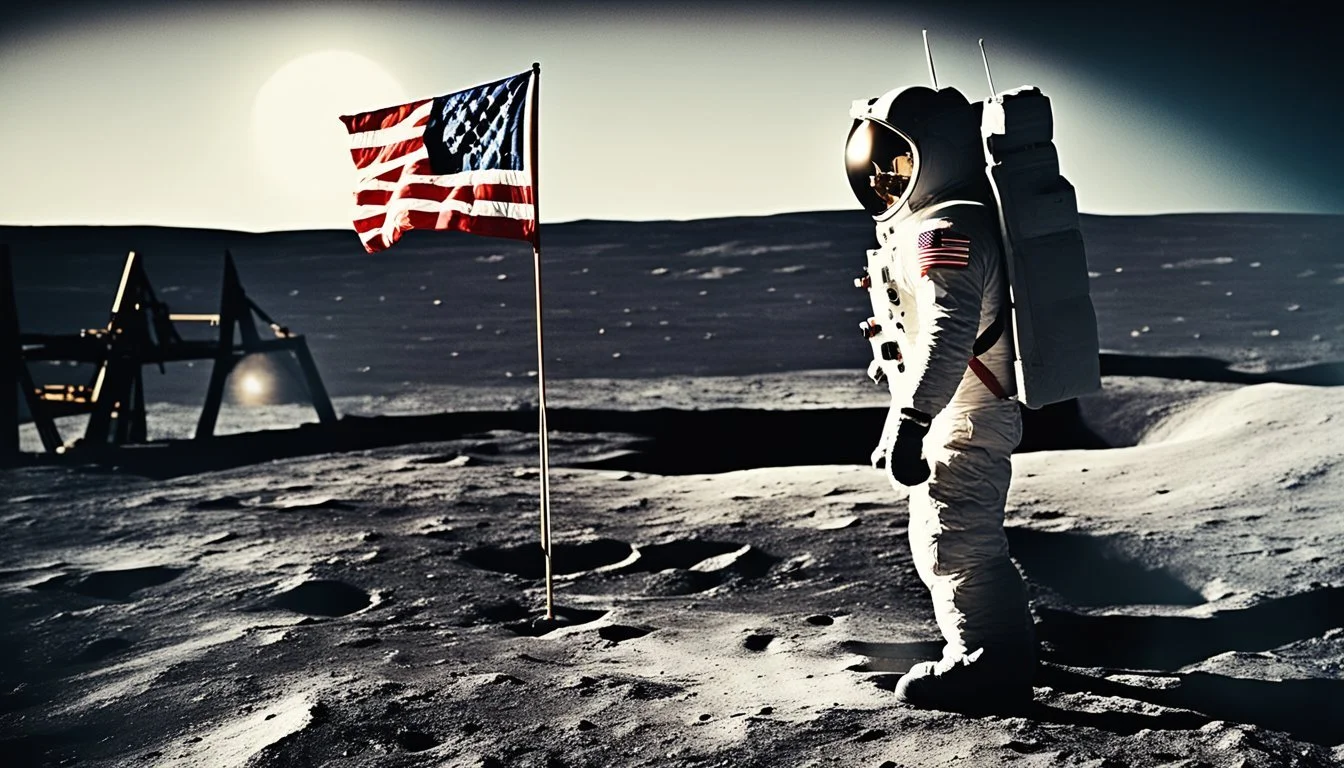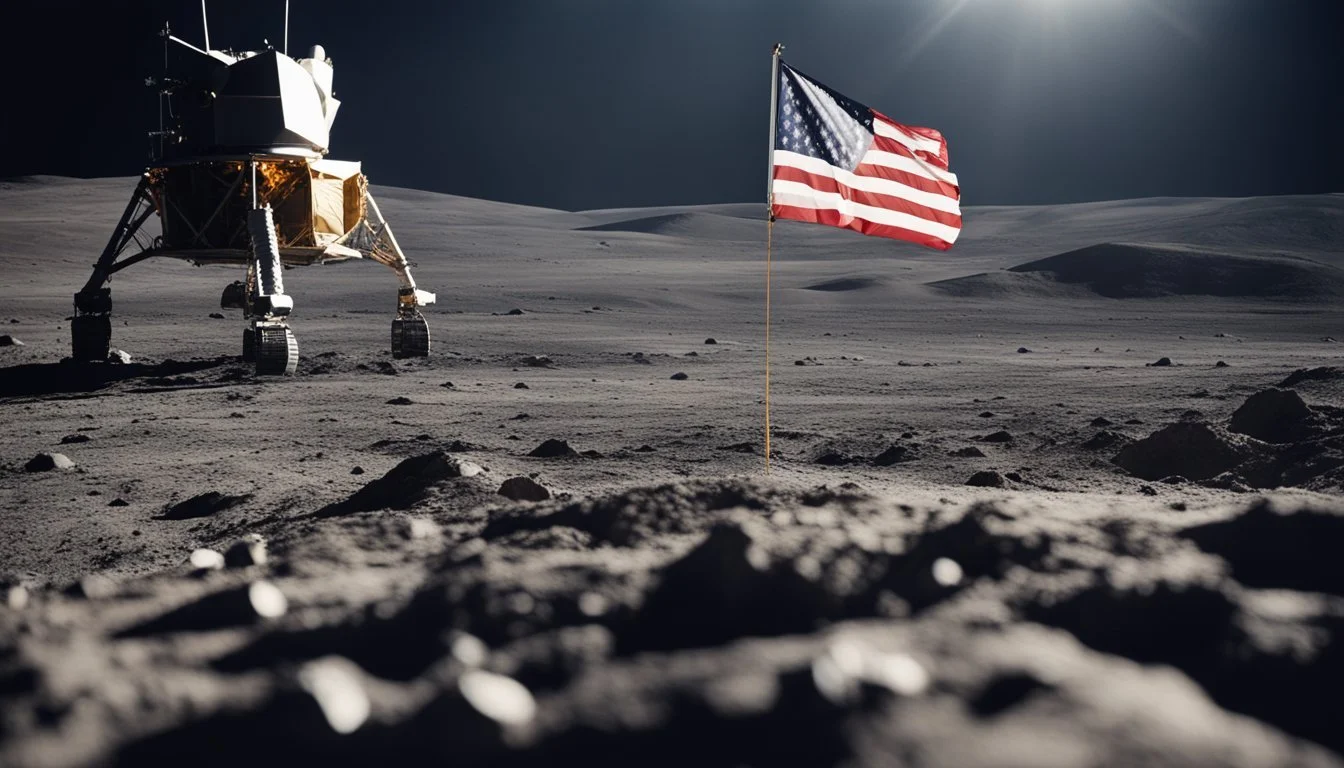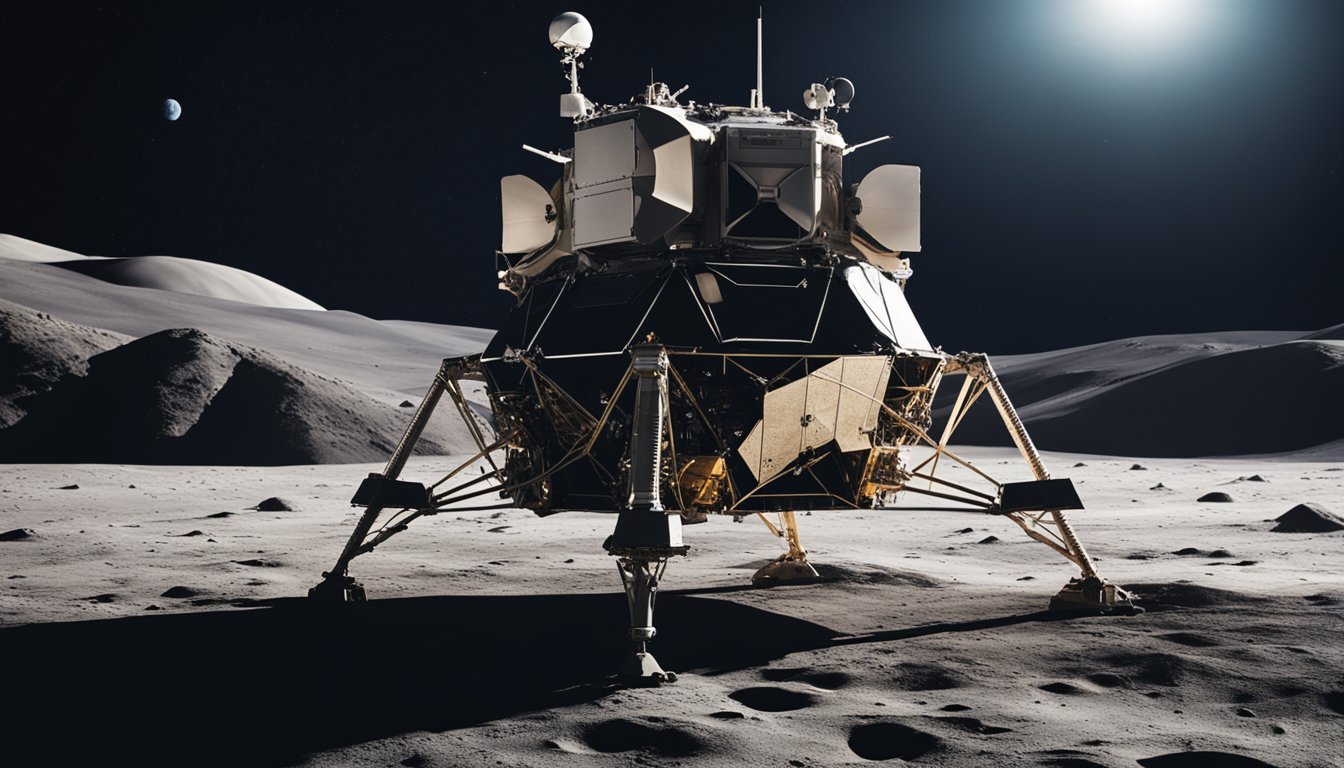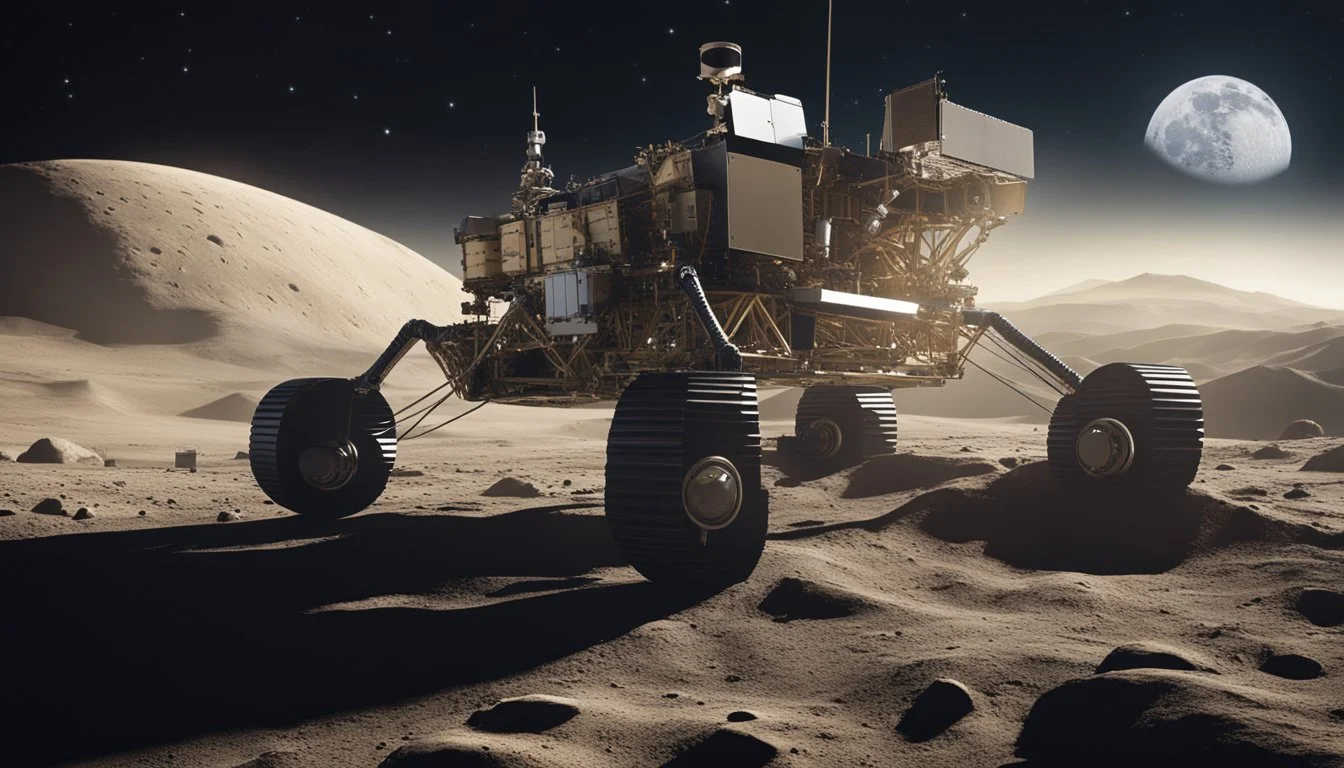One Small Step for Man, One Giant Leap for Conspiracy Theories: Unraveling the Moon Landing Hoax
The Apollo 11 mission's successful Moon landing on July 20, 1969 stands as one of humanity's greatest achievements. Despite overwhelming evidence, some still question its authenticity. Extensive scientific data, photographs, videos, and lunar samples conclusively prove that astronauts Neil Armstrong and Buzz Aldrin walked on the Moon.
Conspiracy theories about the Moon landing being faked persist decades later. These claims often focus on perceived anomalies in NASA photos and videos. However, experts have thoroughly debunked these theories using scientific analysis and historical records.
The Moon landing represents a pivotal moment in space exploration history. It demonstrated human ingenuity and sparked further advancements in science and technology. While skeptics may continue to doubt, the Apollo program's accomplishments remain an indisputable testament to what humans can achieve.
Historical Context of the Moon Landing
The Moon landing marked a pivotal moment in human history, emerging from the intense rivalry of the Space Race and fulfilling a bold vision set forth by President John F. Kennedy. Its global impact reshaped perceptions of human potential and technological achievement.
The Space Race and the Apollo Program
The Space Race began in the 1950s as a competition between the United States and the Soviet Union. Both nations sought to demonstrate technological superiority through space exploration achievements.
The Soviets took an early lead with the launch of Sputnik 1 in 1957 and Yuri Gagarin's orbital flight in 1961. These successes spurred the U.S. to accelerate its space program.
NASA established the Apollo program in 1961 with the goal of landing humans on the Moon. The program faced numerous challenges, including the tragic Apollo 1 fire in 1967.
John F. Kennedy's Vision for Space
President John F. Kennedy played a crucial role in setting the Moon landing goal. In a 1961 speech to Congress, he declared:
"I believe that this nation should commit itself to achieving the goal, before this decade is out, of landing a man on the Moon and returning him safely to the Earth."
Kennedy's vision galvanized public support and resources for the space program. His commitment to the Moon landing persisted even in the face of mounting costs and technical difficulties.
The president's assassination in 1963 further motivated the nation to fulfill his lunar ambition as a tribute to his legacy.
The Global Impact of Apollo 11
The Apollo 11 mission captivated the world's attention in July 1969. An estimated 650 million people watched the Moon landing on television, making it a truly global event.
Neil Armstrong's first steps on the lunar surface and his famous words, "That's one small step for man, one giant leap for mankind," became instantly iconic.
The success of Apollo 11 demonstrated American technological prowess and marked a significant Cold War victory over the Soviet Union.
The mission's scientific achievements included collecting lunar samples and conducting experiments that expanded our understanding of the Moon's composition and origins.
Images of Earth from space, particularly the "Earthrise" photo, sparked a new environmental awareness and changed humanity's perspective on our planet.
Examining the Evidence of the Moon Landings
The Moon landings left behind tangible proof and scientific data that continue to be studied today. Multiple sources of evidence support the reality of these historic missions.
Technological Feats and Lunar Science
NASA developed advanced technology to make the Moon landings possible. The Saturn V rocket, the most powerful ever built, successfully launched astronauts beyond Earth's orbit.
The Lunar Module allowed controlled descent and ascent from the Moon's surface. This feat required precise engineering and navigation in an alien environment.
Astronauts conducted experiments on the lunar surface, measuring seismic activity, heat flow, and solar wind composition. These studies provided valuable data about the Moon's structure and history.
Apollo Landing Sites and Moon Rocks
The Apollo missions left behind physical evidence at their landing sites. The Lunar Reconnaissance Orbiter has photographed these sites from orbit, showing the descent stages, scientific instruments, and even astronaut footprints.
Retroreflectors placed by Apollo astronauts are still used today. Scientists bounce lasers off these devices to measure the exact distance to the Moon with centimeter precision.
Moon rocks brought back by Apollo missions have unique properties. They lack water, show no signs of oxidation, and contain isotopes matching lunar soil samples from later robotic missions.
Analyses by Experts and Scientists
Independent researchers and institutions worldwide have analyzed Apollo mission data. Geologists have confirmed the lunar origin of returned samples through chemical and isotopic analysis.
Astronomers use Apollo seismic data to study the Moon's internal structure. This information aligns with current models of lunar formation and evolution.
International space agencies have verified NASA's accomplishments. The Soviet Union, despite being a rival, acknowledged the Moon landings' authenticity based on their own lunar exploration data.
The Moon Landing Hoax Theories
Moon landing conspiracy theories claim NASA faked the Apollo missions. These ideas persist despite extensive evidence of the landings' authenticity. Proponents offer various arguments to support their beliefs.
Origins and Propagation of Hoax Claims
Bill Kaysing published "We Never Went to the Moon" in 1976, sparking widespread doubt. He argued NASA lacked the technology to reach the moon. Kaysing's book gained traction among skeptics.
Other theorists soon followed, proposing different scenarios. Some claimed the landings were filmed on Earth by director Stanley Kubrick. These ideas spread through books, articles, and documentaries.
Conspiracy theorists often point to alleged anomalies in NASA's photos and videos. They question the lack of stars in lunar images and the waving flag on the airless moon.
Key Proponents and their Evidence
Bart Sibrel, a filmmaker, gained notoriety for confronting astronauts. He demanded they swear on the Bible that they walked on the moon. Sibrel produced "A Funny Thing Happened on the Way to the Moon," alleging video fakery.
Some theorists claim radiation in the Van Allen belts would have killed the astronauts. Others argue the lunar module's rocket didn't leave a crater on the moon's surface.
Proponents often cite the missing original tapes of the moon landing as suspicious. They question why NASA would lose such important historical records.
Social Media and the Spread of Misinformation
Social media platforms amplify moon hoax theories. YouTube hosts numerous videos promoting these ideas, some garnering millions of views. Conspiracy content often uses emotional appeals and selective evidence.
Instagram and Facebook allow rapid sharing of memes and infographics supporting hoax claims. These often oversimplify complex scientific concepts, making them seem more plausible to casual readers.
Algorithms on these platforms can create echo chambers, reinforcing beliefs in the hoax. Users who engage with conspiracy content are often shown more similar material, deepening their convictions.
Debunking the Hoax: Counterarguments and Clarifications
Extensive evidence supports the reality of the Apollo 11 moon landing. Scientific explanations and photographic analysis have addressed common misconceptions about the mission.
Addressing Key Hoax Accusations
The American flag appears to wave in photographs, leading some to claim it proves the presence of wind. In reality, the flag had a horizontal rod to keep it extended in the airless lunar environment.
Shadows in lunar images sometimes appear to point in different directions. This is due to uneven terrain and the sun's position, not multiple light sources as claimed by conspiracy theorists.
The lack of visible stars in moon photos is often cited as suspicious. However, the bright lunar surface and short camera exposure times made capturing faint starlight impossible.
Scientific Explanations for Common Misconceptions
Radiation in space was a genuine concern for astronauts. NASA developed specialized shielding in spacesuits and the lunar module to protect against harmful cosmic rays and solar radiation.
The Van Allen radiation belts surrounding Earth posed a challenge. Apollo missions were carefully timed and trajectories plotted to minimize exposure during transit.
Lunar dust behaves differently than on Earth due to lower gravity and lack of atmosphere. This explains the unique appearance of astronaut footprints and dust patterns in photos and videos.
Role of Photographic Evidence in Debunking Myths
High-resolution scans of original NASA film negatives reveal details impossible to fake with 1960s technology. These images show lunar dust particles and equipment in exquisite detail.
Reflections in astronaut visors and equipment surfaces provide multiple angles of the landing site, consistent with being on the moon.
Lunar laser ranging experiments left reflectors on the moon's surface. Earth-based observatories still use these to measure the exact distance to the moon, confirming the Apollo landings.
The Role of Government and Public Perception
Public trust in government institutions and scientific achievements has fluctuated over time. Conspiracy theories about major events like the moon landing have emerged in this context, influenced by cultural and political factors.
NASA Funding and Public Trust
NASA's budget peaked in the 1960s during the Space Race. The agency received 4.4% of the federal budget in 1966, compared to less than 0.5% today. This massive funding fueled rapid technological advancements and culminated in the Apollo missions.
Public enthusiasm for space exploration was high during this period. The moon landing broadcast reached an estimated 600 million viewers worldwide. However, as Cold War tensions eased and domestic issues took center stage, public interest and funding declined.
NASA's transparency efforts, including live broadcasts and extensive documentation, aimed to maintain public trust. Yet some skeptics questioned the allocation of resources to space exploration amid other national challenges.
Conspiracy Theories in the Context of Historical Events
The moon landing occurred during a tumultuous period in U.S. history. The Vietnam War and civil rights movements had eroded public trust in government institutions. The Watergate scandal, which unfolded shortly after Apollo 11, further undermined confidence in official narratives.
This climate of skepticism provided fertile ground for conspiracy theories. Some groups questioned the authenticity of the moon landing, citing alleged inconsistencies in photos and videos. These theories gained traction alongside other fringe beliefs, such as flat Earth theories.
The U.S. flag "waving" on the airless moon became a focal point for skeptics. NASA explained this as a result of the flag's rigid horizontal rod, but the image persisted as supposed evidence of fakery in some circles.
Scientific and Cultural Legacy of the Moon Landings
The Apollo program's lunar missions profoundly impacted science, technology, and popular culture. These achievements continue to inspire modern space exploration and shape our understanding of the cosmos.
Modern Space Endeavors and Lunar Exploration
NASA's Apollo program paved the way for ongoing lunar research. The International Space Station serves as a platform for microgravity experiments and space technology development. Several countries and private companies have launched lunar missions, building on Apollo's legacy.
Space agencies are planning crewed missions to establish a permanent lunar presence. These efforts aim to use the Moon as a stepping stone for deeper space exploration, including potential Mars missions.
Advanced technologies developed for Apollo find applications in everyday life. Innovations in computing, materials science, and miniaturization continue to benefit various industries.
The Influence of Apollo on Science and Pop Culture
The Moon landings significantly advanced space science. Lunar samples collected by Apollo astronauts, including Gene Cernan on Apollo 17, provided valuable insights into the Moon's composition and origin.
Apollo missions inspired generations of scientists and engineers. The program's success fueled interest in STEM fields and space-related careers.
Hollywood embraced space themes in films and TV shows. Movies like "Apollo 13" and "First Man" dramatized the Moon landings, keeping public interest alive.
Space exploration became a cultural touchstone. Apollo imagery and references appear in art, music, and literature, cementing its place in popular consciousness.
The Moon landings remain a symbol of human achievement and technological progress. They continue to inspire curiosity about space and push the boundaries of exploration.
Conclusion: The Continuing Journey in Space Exploration
Space exploration continues to advance at a rapid pace. NASA and other space agencies around the world are setting ambitious goals for future missions.
The International Space Station serves as a critical research platform in low Earth orbit. It enables scientific experiments in microgravity and tests technologies for long-duration spaceflight.
Plans are underway to return humans to the Moon. NASA's Artemis program aims to land the first woman and next man on the lunar surface by 2025.
Space agencies are also looking beyond the Moon. Mars remains a key target for robotic exploration and potential human missions in the coming decades.
Private companies are playing an increasingly important role in space activities. They are developing new launch vehicles, spacecraft, and space habitats.
Scientific data from space missions continues to expand our understanding of the universe. Telescopes and probes provide insights into distant planets, stars, and galaxies.
Space technology benefits life on Earth in numerous ways. Satellite communications, weather forecasting, and navigation systems are just a few examples.
As we move forward, international cooperation will be crucial for major space endeavors. Shared expertise and resources can accelerate progress and foster peaceful collaboration.




